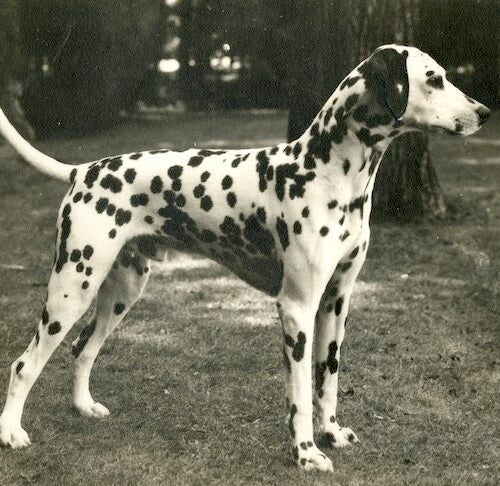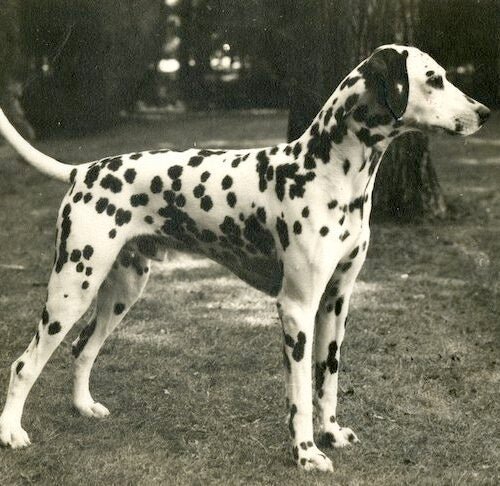Dalmatians, those iconic spotted dogs, have a surprising origin story. Did you know that their roots can be traced back to Croatia? Yes, these eye-catching canines actually come from the coastal region of Dalmatia in Croatia, hence their name.
Dalmatians have a rich history intertwined with their Croatian heritage. Originally, they were used as carriage dogs, guiding and guarding the horse-drawn carriages of noble families. Over time, their unique coat pattern and distinctive appearance captured the attention of dog enthusiasts around the world. Today, Dalmatians are not only beloved pets but also excel in various roles, including search and rescue, therapy work, and even circus performances. Their versatility and striking looks make them a truly remarkable breed, loved globally.

Where Do Dalmatians Come From? The Fascinating Origins of this Unique Breed
For centuries, Dalmatians have captured the hearts of dog lovers around the world with their distinctive spots and loyal personalities. But have you ever wondered where these elegant dogs actually come from? In this article, we will delve into the fascinating history of Dalmatians and explore their origins. From their early roles as carriage dogs to their popularity in fire stations, Dalmatians have a rich heritage that is worth discovering.
The Ancestry of Dalmatians: Tracing Their Origins
The origins of Dalmatians can be traced back to ancient times. However, pinpointing their exact ancestry is a bit more challenging. Some believe that Dalmatians have roots in Croatia, with historical artifacts suggesting their presence in the region dating back to the 17th century. However, others argue that Dalmatians may have originated in Egypt or even India.
Regardless of their exact origins, Dalmatians gained prominence in Europe during the 18th and 19th centuries. Their striking appearance and versatile nature made them popular companions for nobles and royalty. They were known for accompanying horse-drawn carriages, providing protection and adding a touch of elegance to the vehicles.
Dalmatians in Fire Stations: A Match Made in Heaven
One of the most iconic associations with Dalmatians is their affiliation with fire stations. But how did this partnership come about? Historically, horses were used to pull firefighting equipment, and Dalmatians proved to be excellent companions for these horses. Their role included guarding the horses, clearing the way, and even providing a friendly face for children during fire emergencies.
The reason behind this unique bond lies in the natural affinity between Dalmatians and horses. Dalmatians are known for their high energy levels, agility, and endurance, making them perfect fits for the fast-paced environment of a fire station. Over time, Dalmatians became an integral part of firefighting culture, adorning fire trucks and becoming mascots for fire departments across the globe.
The Unique Characteristics of Dalmatians: What Sets Them Apart
Dalmatians possess a set of distinctive characteristics that make them easily recognizable and beloved by many. Their most notable feature, of course, is their coat of spots. Each Dalmatian is born with a pure white coat, and their spots develop over time. No two Dalmatians have identical spot patterns, adding to their individuality.
In addition to their spots, Dalmatians are also known for their athletic build and boundless energy. They are natural athletes and excel in various dog sports such as agility, obedience, and tracking. Their high energy levels make them excellent companions for active individuals or families who enjoy outdoor activities and exercise.
Caring for a Dalmatian: Tips and Considerations
Owning a Dalmatian can be a rewarding experience, but it’s important to understand their specific needs and characteristics. Here are a few tips and considerations for caring for a Dalmatian:
1. Regular exercise: Dalmatians require ample exercise to keep them mentally and physically stimulated. Daily walks, play sessions, and opportunities to run in a securely enclosed area are essential.
2. Proper socialization: Early socialization is key for Dalmatians to develop into well-rounded dogs. They thrive in a loving, structured environment with positive reinforcement training.
3. Regular grooming: Dalmatians have short, dense coats, which require regular brushing to remove dead hair and keep their skin healthy. Additionally, they are prone to certain skin conditions, so keeping an eye out for any issues is important.
4. Health considerations: Dalmatians have a higher risk of developing urinary tract problems, including bladder stones. Feeding them a specialized diet that reduces the formation of crystals can help prevent these issues.
Dalmatians in Popular Culture: Their Enduring Legacy
Beyond their historical significance and unique characteristics, Dalmatians have left an indelible mark on popular culture. Most notably, the breed gained widespread recognition through the classic novel “The Hundred and One Dalmatians” by Dodie Smith, which was later adapted into beloved animated and live-action films by Disney.
The endearing charm of Dalmatians has also made them popular choices for advertising campaigns and the fashion world. Their distinct appearance and recognizable silhouette have been featured in various commercials, print ads, and even high-end designer collections.
Beyond the Spots: The Heartwarming Qualities of Dalmatians
While Dalmatians are often admired for their striking spots and elegant looks, their true beauty lies in their loyal and affectionate nature. They form strong bonds with their families and are known to be protective and gentle with children. Their playful and outgoing personalities make them a delightful addition to any household.
In conclusion, Dalmatians have a rich and storied history that spans centuries. From their mysterious origins to their roles as carriage dogs and fire station mascots, these unique dogs have captured our imaginations and hearts. Whether you’re an admirer of their beauty or considering adding one to your family, understanding their origins and unique characteristics will deepen your appreciation for this remarkable breed. So, the next time you spot a Dalmatian with their distinctive spots, take a moment to appreciate the fascinating journey that brought them to your side.
Key Takeaways: Where do Dalmatians Come From?
- Dalmatians originated in the region of Dalmatia, which is now part of Croatia.
- They were historically used as carriage dogs and firehouse mascots.
- Dalmatians gained popularity through books and movies, like “101 Dalmatians”.
- They are known for their distinctive coat, which is white with black spots.
- Dalmatians are energetic and playful dogs, but they also require proper training and socialization.
Frequently Asked Questions
Welcome to our FAQ section where we answer some common questions about the origin of dalmatians!
1. How did dalmatians get their name?
The name “dalmatians” originates from the region of Dalmatia, located in modern-day Croatia.
These unique dogs were first recognized in Europe and were given the name “dalmatians” after the region near the Adriatic Sea.
2. What is the history of dalmatians?
Dalmatians have an ancient history that dates back several centuries. They were documented in artwork and literature, with evidence suggesting their existence as early as the 16th century.
They were originally bred for specific purposes such as hunting, guarding, and even as carriage dogs due to their stamina and agility.
3. Are dalmatians originally from Croatia?
While it is widely believed that dalmatians originated in Croatia, their exact origin is still uncertain. However, historical evidence points towards Dalmatia as a significant influence in their development.
These dogs gained popularity across Europe, but it’s important to note that they were not exclusive to Croatia and could be found in various countries.
4. Did dalmatians have any specific purpose in history?
Yes, dalmatians had various roles throughout history. They were commonly used as carriage dogs, running alongside horse-drawn carriages to guard against threats and clear the way.
Additionally, their distinctive appearance made them popular as firehouse mascots and they have been associated with fire departments for many years.
5. Are all dalmatians born with spots?
Contrary to popular belief, dalmatians are not born with spots. They are born with plain white fur, and the spots develop as they grow older.
Spot patterns can vary among individual dogs. Some may have small and well-defined spots, while others may have larger and more irregular markings.

DALMATIAN DOGS: the mysterious past and origin!
Summary
Dalmatians are from Croatia and were originally bred to accompany horse-drawn carriages. They are known for their distinctive spots and energetic personalities. Dalmatians gained popularity through movies and books, like “101 Dalmatians.” They are intelligent dogs but can be prone to certain health issues. Dalmatians make great companions for active families who can provide them with plenty of exercise and mental stimulation. Remember, owning a pet comes with responsibilities, so make sure to do your research before getting a Dalmatian!
